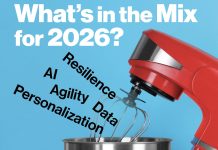
Artificial intelligence (AI) is not a new phenomenon—it has been integral to learning, training, talent, and HR for decades, operating subtly in the background and often unbeknownst to the end user. Key examples of such applications of AI include adaptive learning, recommender tools to support roles and career paths, project and mentor matching, knowledge and content management, as well as skills intelligence—and there are, of course, many more.
With the launch of ChatGPT 3.5 on November 30, 2022, the generative AI (genAI) boom has not only increased applications but also raised the visibility of these sophisticated tools. In addition to text applications through Large Language Models (LLMs) such as GPT, voice applications, translation, avatars, images, and video applications also are adding to the toolbox.
This initial phase of genAI making inroads into the learning and development (L&D) profession largely is defined by a focus on content and content creation, and in each instance, through the use of standalone tools. Applications range from avatars moderating course sections and LLM-generated summaries of key module points to regional translations, professional-grade voiceovers, and the extensive use of AI-generated visuals to enhance content. While this focus on content has positive effects in terms of efficiency and often a cost reduction compared to previous approaches, one could argue that the end result is often not actually very different from what we’ve seen in years prior.
The Shift from Content to Modalities
However, since the latter stages of 2023, this focus has begun to shift. With the advent of integrated tools and platforms that bring together a range of what used to be standalone tools, the focus is shifting more and more away from content and toward modalities. When I refer to modalities in the context of AI-driven learning and training, I’m talking about the various methods and means through which learning content is delivered to and interacted with by the user.
The advent of integrated tools shifts our focus from simply creating content to enhancing how this content is experienced by learners, making it more interactive and tailored to individual learners and needs. By leveraging different modalities, AI is transforming passive learning into an active, personalized journey.
I often describe this shift toward modalities as bringing together the best of two worlds: conversational and experiential learning. Let’s dive into each of these:
Conversational learning with AI—especially in the form of chatbots and virtual tutors—represents a significant shift in how learning, training, and performance support are approached. These tools are not just for querying databases or providing pre-scripted responses; they are becoming increasingly sophisticated, capable of engaging in meaningful dialogues and adapting their responses to the nuances of human interaction. And when we say dialogue, then going forward, we mean “spoken” dialogue, from both sides, without the use of a keyboard unless it is necessary (for example, for accessibility). LLMs have, of course, been the foundation for this transformation.
These innovative approaches, which are continuing to improve in step with improvements in AI, provide learners with an invaluable personal tutor and performance support, capable of the entire spectrum—from answering questions to guiding the learner through complex concepts and providing tailored feedback that aligns with their individual strengths, weaknesses, and progress. Such approaches are available 24/7, and ideally have access to a user’s previous learning programs and conversations for reference.
On the experiential side, AI-driven simulations and interactive scenarios are redefining the boundaries of digital learning. These technologies allow learners to immerse themselves in realistic environments where they can practice skills, make decisions, and see the consequences of their actions in a controlled yet dynamic setting. This hands-on approach not only helps in consolidating knowledge but also significantly improves the learner’s ability to apply skills in real-world scenarios. Without AI assistance, these kinds of simulations used to be a boutique offering, only accessible for those with the budget and time required to develop such simulations, including the mappings and decision trees, as well as the main building blocks, the scenarios.
Real-World Applications: Simulations for Leadership Training
One of the standout applications of integrated AI tools in leadership training is their ability to simulate difficult, high-stakes conversations. Through the use of sophisticated AI avatars, leaders can practice navigating complex interpersonal dynamics in a variety of challenging situations. These avatars are programmed to exhibit a wide range of behaviors and personalities, mimicking the diversity found in real-world workplaces. For example, a leader might engage with an avatar portraying a high-performing employee who struggles with team collaboration. The simulation can guide the leader through the nuances of addressing the employee’s isolated working style without diminishing their morale or productivity.
Further, these tools can simulate sensitive conversations, such as discussing potential promotions or addressing performance issues. Each scenario is designed to challenge the leader’s communication skills, empathy, and ability to maintain composure under pressure. The AI-driven nature of these interactions means they can be highly personalized, adapting to the leader’s responses and providing real-time feedback. This not only helps in refining their approach but also builds confidence in handling similar situations in their actual roles.
Simulations for developing critical thinking and situational evaluation skills are another area where AI integration is proving transformative. These simulations place learners in complex, evolving scenarios that require not just technical knowledge, but strategic decision-making and ethical considerations. For instance, a simulation might involve managing a crisis in a virtual company setting, where the learner must assess the situation, consult with virtual stakeholders, and decide the best course of action, while also managing risk and ethical considerations.
These simulations are enriched with AI to create a dynamic learning environment that changes based on the learner’s decisions, providing a variety of outcomes based on different approaches. This not only enhances the realism of the scenario but also allows learners to experience the consequences of their decisions in a risk-free setting.
Blending Virtual and Live Training: AI in Action
For me personally, a particularly thrilling aspect of these integrated AI technologies has been witnessing their deployment through in-person workshops. Observing these advanced tools in action underscores their transformative potential. For instance, at a leadership training workshop, the integration of AI-driven avatars allowed participants to engage in realistic and challenging conversations that tested and honed their skills, in real time. These simulations facilitated by AI avatars were not just hypothetical exercises but immersive experiences that mirrored actual workplace scenarios. Participants reported a high level of engagement and a profound appreciation for the nuanced feedback provided by the AI, which helped them understand and improve their interpersonal skills.
Moreover, the use of AI in these settings goes beyond individual learning. It fosters a collaborative environment where participants can discuss outcomes and strategies with peers, guided by AI insights. This blend of digital and human interaction enriches the learning experience, making it not only more comprehensive but also more communal. These workshops serve as a testament to the powerful synergy between cutting-edge technology and traditional hands-on training approaches, offering a glimpse into a future where education and professional development are profoundly enhanced by AI.
Converging Paths: The Seamless Fusion of AI and Learning
Conversational and experiential AI, while distinct in their functionalities, are not standalone silos in modern learning and performance support. Rather, they represent two converging trajectories that are reshaping how we approach professional development and training. As we advance, these technologies are not just aligning but integrating, creating seamless and sophisticated learning experiences that synthesize dialogue-based interaction with hands-on practical application. This evolution is moving us toward solutions where the line between conversational guidance and immersive simulation blurs, offering learners a fluid, interactive experience. Such integration ensures that AI not only adapts to the learner’s immediate needs but also anticipates future learning paths, crafting a comprehensive educational experience that leverages the best of both modalities. As these tools merge, they promise to enhance learning efficacy, making training more personalized, dynamic, and impactful, thereby setting a new standard in how we develop skills and competencies and support workers in an increasingly digital world.
AI Usage
Content
- Text
- Audio
- Image
- Voice
- Translation
- Avatar
- Video
Modalities
- Conversational Learning with AI: Provides learners with an invaluable personal tutor and performance support, capable of the entire spectrum, from answering questions to guiding the learner through complex concepts and providing tailored feedback that aligns with their individual strengths, weaknesses, and progress. Available 24/7, and ideally with access to a user’s previous learning programs and conversations for reference.
- Experiential Learning with AI: AI-driven simulations and interactive scenarios allow learners to immerse themselves in realistic environments where they can practice skills, make decisions, and see the consequences of their actions in a controlled yet dynamic setting.
Join Dr. Bernhardt for a Webinar on this topic on May 29 at 12 p.m. Eastern. In “Beyond Content: The Rise of AI in Transforming Learning Modalities,” he will explore the revolutionary impact of AI on professional training and development and showcase real-world examples and the latest advancements in AI technologies that facilitate diverse learning modalities. Click here to register today (the recording also will be available on-demand).




